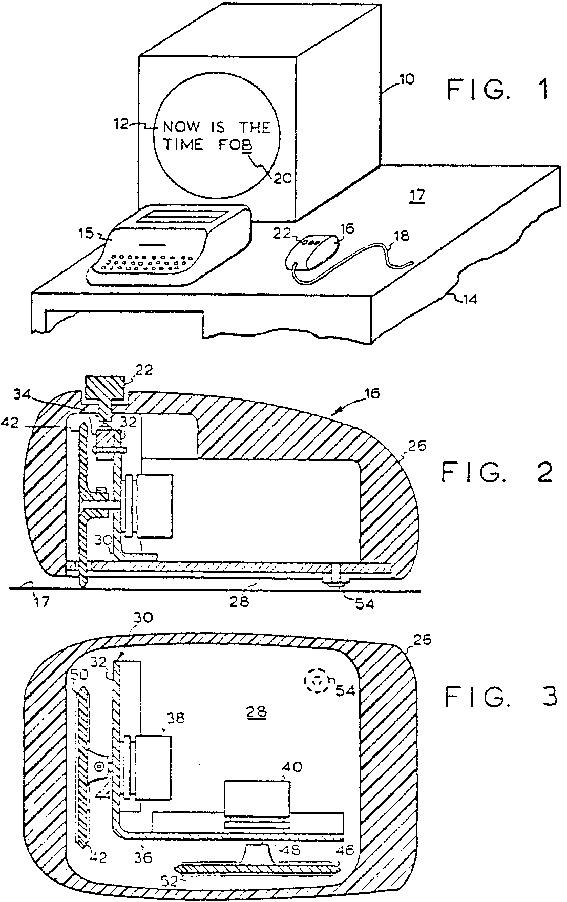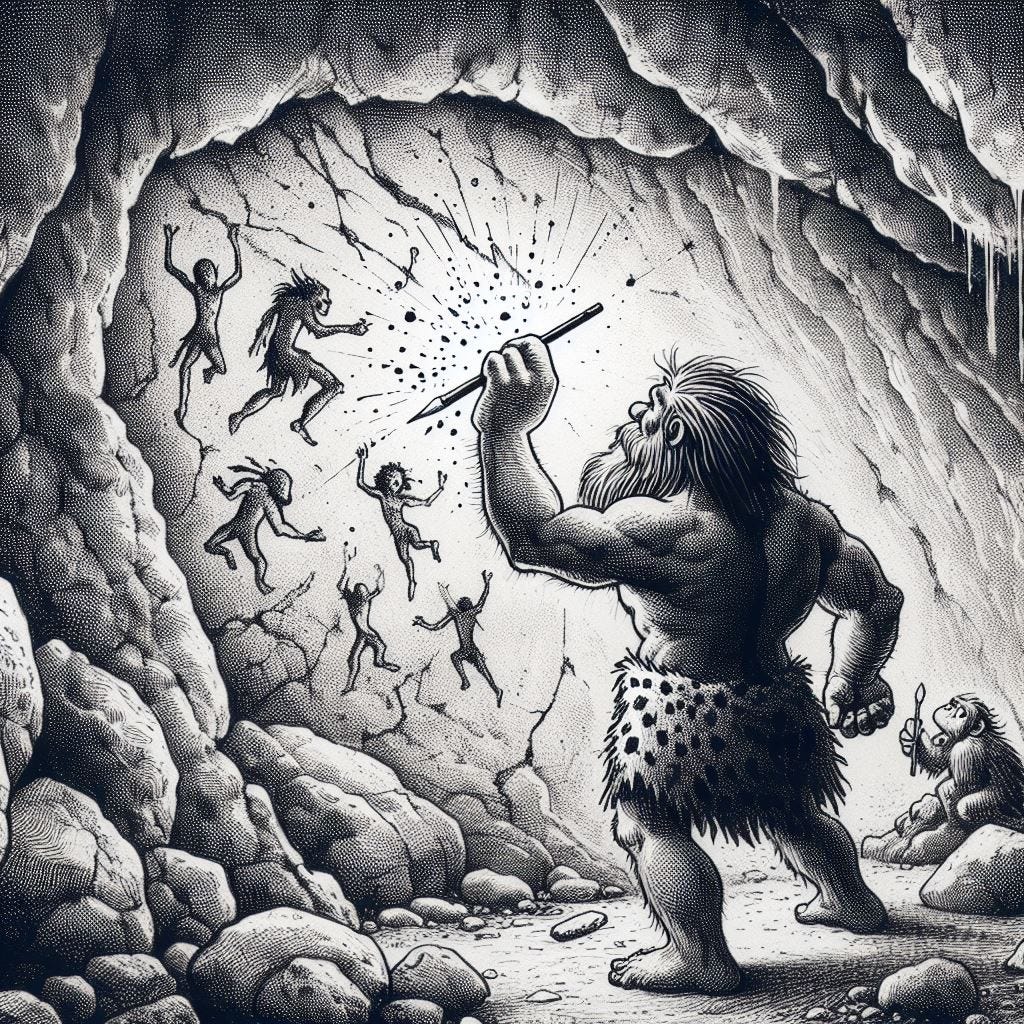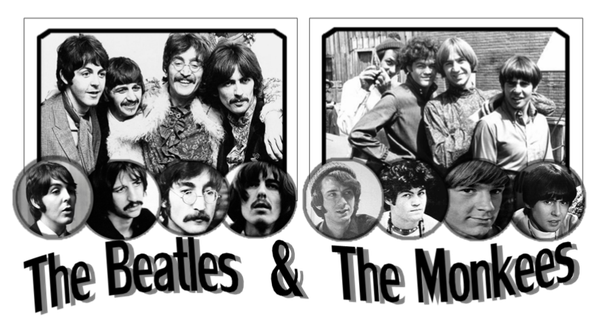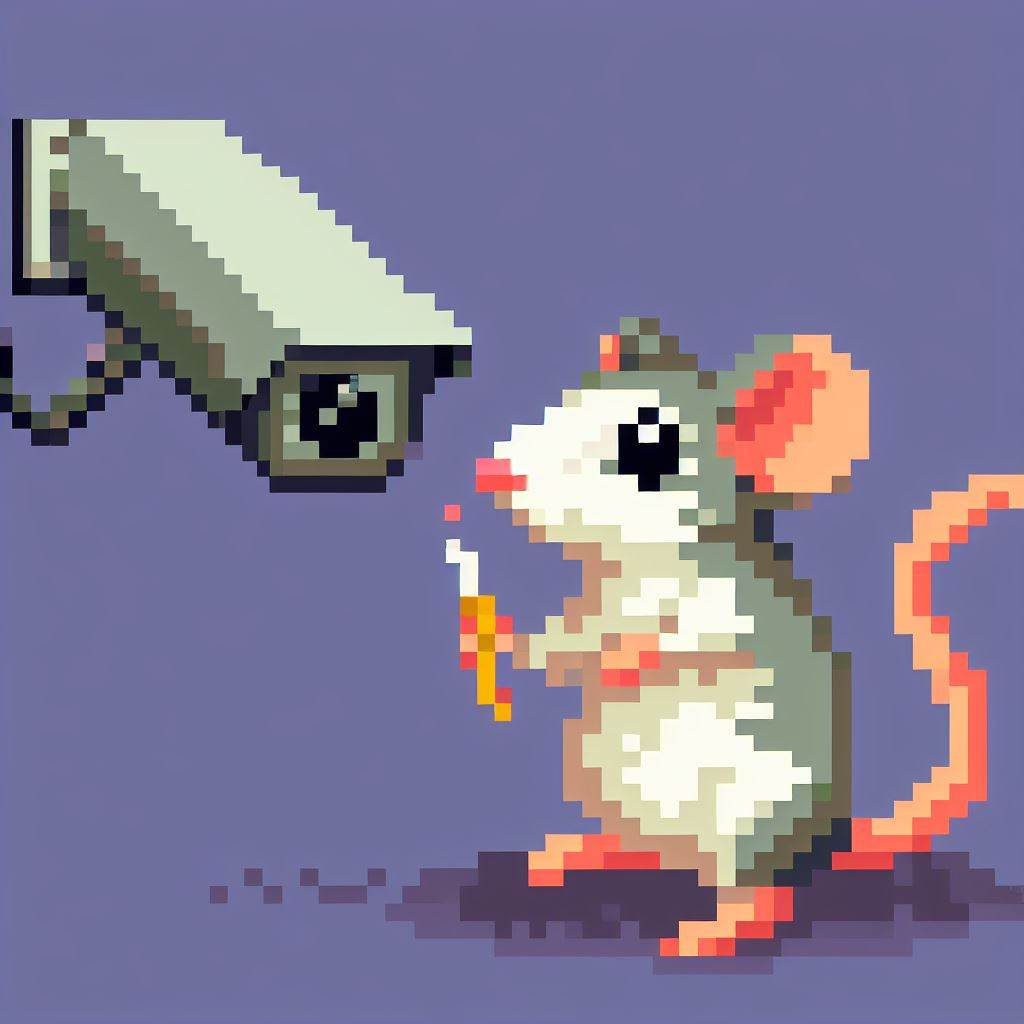From Pixels to Pixie Dust: Design in the Age of AI
How AI became like pixie dust, touching every aspect of technology, and why it will change how designers think.
Humans love to spice things up. As far back as the Paleolithic times, humans used mica, a silicate mineral crystal, to add a little sparkle to their cave art. Much like kids add glitter to jazz things up, caveman weren’t averse to adding a little shine to their paintings of fierce animals to make them pop.
Artificial Intelligence today looks and feels a lot like mica, the mystery pixie dust in the air, wafting into everything we do. If you’ve ever played with glitter as a kid (or adult, no judgement), you know how that stuff never goes away. It stays with you long past its magic has faded. And like glitter, there is no shortage of applications that would not benefit from a little pizzaz. Seemingly overnight, AI is what everyone is waxing about; no prompts needed.
So, why is this important for designers? How should it affect our thinking — design thinking to be exact.
The truth is that technically speaking, we’re still in Plato’s cave, distracted by shiny objects prancing on walls (screens today). We only see hints of what’s out there. Behind the scenes, AI has been working its magic on us for years (in fact, it just auto-corrected the word “magic” in this very sentence). AI has enabled us to find the best directions home (Google Maps), helped us view the next binge-worthy show to watch (Netflix), and optimized the supply chain of industrial manufacturing (noodle.ai).
While AI is not new, what’s truly groundbreaking is how quickly people have started using it. Its rapid adoption is only matched by the even faster growth in AI's capabilities and the vast number of things it can now do. What's even more surprising is that AI isn't just being used by a small group of tech enthusiasts (the "motley crew" of early adopters). Instead, a wide range of people are finding uses for AI, from journalists and researchers to engineers and travel planners.
How fast is ChatGPT growing?
For comparison, it took Twitter five years to reach 100 million active users. It’s taken ChatGPT two months to achieve the same.
From Pixels to Pixie Dust
In the early days of the iPhone, Apple ads proudly touted that you can do practically anything with their new magic device. It seemed like whatever you could imagine, “There was an app for that.” Today, you can dream up almost anything, and while there may not be an app for that yet, “there is an AI for that.” That’s due to the way AI has been setup to be a generalist, with near universal applications, as long as you have the right language model and training behind it.
If there’s a chance to add a little AI pixie dust to a product, feature, or experience, people will do it, and that’s changing user expectations. And like glitter, it can get a little messy if not done well. That’s where the creative process comes in.
AI in the AIR
Think of AI not as a one-hit wonder (chatbots), but more like a brilliant band of musicians. The popularity of AI mimics how the Beatles burst into the scene, launching the “British Invasion” in America, continually inventing and re-inventing new songs, albums and genres that captured the world’s admiration.
Eventually, that fervor goes on to create copycats, artificially generated (or perhaps hallucinated) versions of itself, like the band The Monkees. Yes, I said it, the Monkees might have been the first AI generated band.
And much like the Beatles, there’s something for everyone in AI.
Parents: Have a baby that won’t sleep without crying, and need that perfect lullaby? There’s an AI for that.
Singles: Can’t get a date and need advice based on your dating app profile? There’s an AI for that.
Cooks: Want your kitchen oven to instantly know what food you’re cooking so it sets the perfect temp and cook time? There’s an AI for that.
Because AI is changing our most basic notion of what technology can do, the well-rounded designer must also reframe every problem with that in mind, questioning every assumption and predefined user goal.
Rather than sprinkling AI willy-nilly, losing its luster in the process, designers need to go back to the drawing board. To make an impact, the notion of what’s technically possible must be expanded to uncover the newly discovered unmet needs.
The Evolution of Design Thinking is Here
We designers like to start with empathy, by way of curiosity, to uncover those unmet needs. Maslow’s hierarchy of needs — physiological, safety, love and belonging, esteem and self-actualization — do not change, but how those needs are met is indeed changing.
Where once designers were trying to design a better mousetrap, AI-powered cameras can tell you where to put those mousetraps for maximum effect, helping you place fewer traps, even if they’re inferior ones.
While the high-level needs are the same, new technology introduces new twists on those needs while created new wants. For most designers, the answer to ‘How might we’ now seems somewhat simplistic, outdated, especially when the alternative is a few keystrokes way. The ability to compute a thousand prompts of equally good value, while simultaneously adding evidence-based responses that are continually learning and improving, will need an entirely different approach to product design and design thinking.
Designer as Orchestrator
With AI, the designer’s job has evolved into something closer to a conductor, orchestrating various instruments, where both technology and design drive creativity together. Designers now need a seat at another table, the data tables used to train large language models for AI.
The roots of the design thinking approach, pioneered by IDEO, go back to the early days of the internet and personal computing. It coincided with regular folks (vs business mainframe users) beginning in earnest to interact with computers on a regular basis. Technology went from being exclusively B2B to mostly B2C, and out of that emerged the discipline of human factors, usability engineering, and experience design.
The pace of change was equally rapid, but it was something you could understand, see and touch. The computer interface, and the need for a controller (a mouse), for example, to navigate the computer screen, was a technical challenge, but it was tangible, something that had a real-world equivalent that you could prototype… think pen on paper, brush on canvas, finger on calculator.
Technical capability was part of the creative process, and you could influence it, mold it into something that could be designed. But when technology improves rapidly, as we see today, designers and engineers must work together closer than ever to create applications that people will actually want to use. There are some problems that are just too complex for any one discipline to solve.

This way of working, where design and technology partner closely, is the natural evolution of design thinking, and helps designers better apply their ideas to technology. It helps move designers into a position where knowledge of technology is just as important as their knowledge of the user.
Not everything that makes sense works, and not everything that works makes sense. - Rory Sutherland, Alchemy
Big Tech has for the most part always worked this way, having found the sweet spot in the Venn diagram of being both engineering-led and design-forward. Design in these organizations was there to push the boundaries of what technology can do to achieve the desired user experience.
The reality is that in any creative process, ideas can come from anywhere. Jony Ive, the former Head of Design at Apple, once remarked in an interview that “Some of the most creative people I’ve worked with have been in engineering and in marketing, not just design.” Robust, cross-functional collaboration is needed today more than ever to capture and iterate on those ideas.
What’s changed with AI, and one of the reasons why I think Google missed the inflection point, is that they failed to see that people’s needs would evolve with new technical advancement. Adding more features to the search results page wasn’t cutting it anymore. They didn’t realize that people not only want fast answers, they want answers that are unique to them. Answers and interactions that made them feel special, which in turn made them engage more with the product.
For Google, Search works (and still works) pretty much the same way it did back in 1998, when it launched, using keywords mixed in with natural language processing to quickly show you the top results. Along the way, they’ve added images, filters, personalization, and some pixie dust of generative AI. But in essence, it is still the same experience. Click on a result or ad, and a dubiously designed website will show you what you might be looking for.





